|
This is the first installment of our Best Bargain Lenses series in which we attempt to sift out the truly best-bangs-for-your-buck in the legacy lens world. We are starting with the Pentax K-mount (bayonet) because of increased interest in vintage Pentax glass since the release of the new K-1 full-frame (35mm format) DSLR. You will find that most bargains lie in the focal lengths between 28 to 200mm and at moderate apertures (e.g. f/3.5 or f/4 for wide angles and telephotos and f/1.7 to f/2 for normal lenses). The beauty of these unassuming optics goes beyond their low prices; because of their smaller maximum apertures they were able to use simpler (most of the time) optical constructions, which saved weight and bulk and yet gave excellent performance. So let's start the party with the original series of Pentax K-mount lenses: the SMC Pentax models which were manufactured from 1975 to 1977 (offering the best build quality before cost-cutting entered the picture with the M- & A-series). As we go through we will consider each lens in context with its predecessor in M42 screwmount and successor in SMC-M. Prices are current as of 2016 and are an average cost for lenses in very good to excellent condition. 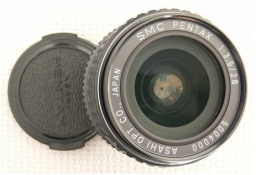 Wide Angles SMC Pentax 28mm f/3.5 Whereas the other lenses in this article use the same optical construction as their immediate Takumar ancestors, the SMC Pentax 28mm f/3.5 is unique with its 8-elements in 7-groups layout. The 28/3.5 lens was generally a budget-oriented offering from the camera companies that offered good performance for-the-dollar. Somehow, someone let the Pentax lens designers go beyond the usual constraints with the K-version, because this lens has GREAT performance, improving on the already very, very good SMC Takumar (7e/7g) and the slightly de-contented SMC-M (6e/6g) lens. From f/5.6 - 11 the sharpness is eye-watering, with classic Pentax punch to colors, especially blues and greens, making it a marvelous landscape lens. The K-version uses 52mm filters as opposed to the Takumar and M-versions' 49mm filter threads. It focuses down to 0.3m (12") compared to the Takumar's 0.4m (16"). Weight is 260 grams (9 oz). Prices run from $150 -$200 USD on average. This lens is worth it. Optical and physical construction are top-notch. It is easily differentiated from the M-version by the six rows of rubber nubs on the focusing ring to the M's three rows. 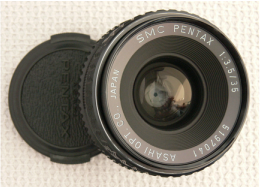 SMC Pentax 35mm f/3.5 This is an absolute classic optical design from Pentax which did not change from its introduction in 1959 as an Auto-Takumar lens. The only changes were to the glass types and coatings as Pentax developed the famed SMC (Super-Multi-Coated) lenses. With a simple 5-elements in 4-groups construction this lens is the lightest & most compact original K lens, a whopping 100 grams (3.5 oz) lighter than the 28/3.5. And it is just as sharp. Again, it seems like this lens was built with landscapes in mind, with especially intense blues. Filter size is also 52mm and prices are about the same as the 28/3.5 at around $150 - $200 USD. The SMC screwmount version (49mm filter) should give similar performance (allowing for sample variation, of course) except for minimum focusing distance which the K bests handily, 0.3m (12") versus 0.45m (18"). The M-series replacement was a decent f/2.8 lens that lacks the sparkle and panache of this beauty. An interesting comparison is the rare and expensive K 30mm f/2.8 which runs around 2 to 3 times the money and does not give 2 to 3 times the performance. This is no disrespect to the gorgeous 30/2.8! But we are looking for bargains here :-). 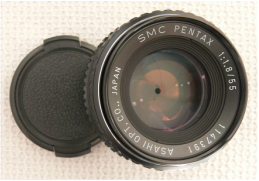 Normal Lenses SMC Pentax 55mm f/1.8 & f/2 These are definitely the two lenses with the biggest bang for the least amount of bucks in the whole line of K lenses. The f/1.8 was introduced with the K-bodies in 1975 as the kit lens and the f/2 version was introduced as the lower-cost K1000's kit lens in 1976. Both were discontinued in 1977. They share the same 6-elements in 5-groups design, except for a field stop that was used to restrict the aperture on the latter to f/2. The 55/1.8 & 2 again have a long history at Pentax starting in 1958 with minor changes to the design over the years (e.g. a radioactive element was introduced in 1965 and then discontinued with the K-version). Resolution-wise they give up nothing to the highly coveted 50/1.4, particularly from f/4 on. They were succeeded by the M-series 50/1.7 and 50/2. The 1.7 offers excellent performance, a smidgen better wide open but giving that back at f/8-11. The M-50/2 is a bit more of a drop in image and build quality from the 55/2 (it dropped to a 5-element construction, but is still very decent). If you have an APS-C sensor the 55s give just that little extra reach for portraits. The K-lenses take 52mm filters instead of the 49mm size used for both Takumars and M-series. Weight is 220 grams (under 8 oz). You can most often find the 55/2 on an early K1000 (nice package!) and the 55/1.8 on the higher-end K-bodies or separately. Prices for a bare lens generally run from $40 - 60 USD for a copy in good to excellent condition. A lens every Pentaxian should have. 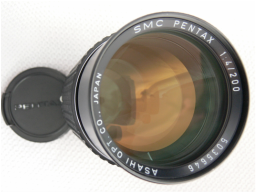 Telephotos SMC Pentax 105mm f/2.8 A lovely portrait lens at f/2.8 that sharpens right up from f/4 - f/16. The 105/2.8 carried over the optical formula (5e/4g) of the 1961 and up Takumars, which perform identically. The 85/1.8 K gets more attention, and that's just fine for the 105. Many people find that they are either/or when it comes to the 85 and 100 - 105mm focal lengths. If you are a 105-type of person, you can expect to pay a quarter of the price of the 85/1.8 ($110 - 125 USD on average for excellent copies. Bargain city!). The 85 does focus closer (85 cm vs. 120 cm for the 105). You might give up a smidgen in the bokeh department, but that is a very subjective point that each person needs to decide upon. The 105 drops two aperture blades from the 85's total of eight. Weight is identical at 331 grams (11.7 oz), with the 105 being a touch longer (9mm or just under 3/8"). For once, the succeeding SMC-M 100 2.8 is just as good optically and is smaller and lighter (8mm; 225 grams; with 49mm filters). It also focuses 20cm (8") closer. It does run about $20 - 30 USD more than the 105. The filter ring is the standard 52mm for SMC Ks. SMC Pentax 135mm f/3.5 So you may be noticing a trend of f/3.5 by now ;-). You wouldn't think that a half-stop or so difference would be such a big deal, but for many people the pull of f/2.8, or in this case, f/2.5, is just too much. Which makes things even better for the bargain hunter :-). The K 135/2.5 is an excellent performer and runs from $175 to $250 USD. And weighs 500 grams (17.5 oz). The K 135/3.5 can be had for a third of the cost of the 2.5. And it weighs 365 grams (13 oz). And uses 52mm vs. 58mm filters, nicely fitting in with our other bargains. Both lenses suffer from some CA (chromatic aberration) wide open as did most telephotos from this era and require lens hoods to maintain contrast. The screwmount Auto Takumars and early Super Takumars had a different 5e/4g design followed by the later Super/SMC Takumar 4e/4g layout that carried forward to the K-version. All of the Takumars used 49mm filters and are excellent bargains in themselves. The succeeding M-model (5e/5g) is a definite step down from the K in build and performance but is still very good. The K has a longer focusing grip and is 22mm (7/8") longer and 95 grams (3.4 oz) heavier than the M. A very underrated lens. SMC Pentax 200mm f/4 Finally, an f/4 to break the f/3.5 streak. Our final bargain is one of the best. 200/4 lenses are a great place for the erstwhile bargain hunter to start with telephotos. With the development of good 70/75/80 - 200/210mm f/4ish zooms in the late 1970s and early '80s, these moderate prime lenses were quickly dropped by many photographers. Never mind that most of these fancy new zooms were weaker at the 200mm end (which many of them didn't actually reach, actually more like 180 - 185mm). The K 200/4 just oozes quality, both in the images it forms and its build. It shares the optical formula of its Takumar forebears, but focuses 0.5m (20") closer. It outweighs the M-version: 535 grams (19 oz) to 405 grams (14.3 oz). But there is a price to pay, the M (6e/5g w/ 52mm filters) cannot quite match the image or build quality of the K (5e/5g w/ 58mm filters). And because you can get the K for right around $100 USD (and sometimes a bit less), there is little reason to compromise. A gem of a lens. Conclusion Hopefully, this guide has provided a starting point for building a Pentax K-lens arsenal that will give years of enjoyment. Selecting a wide angle, normal, telephoto combination from the above choices gives you a versatile setup without breaking the bank or your back ;-). For instance, going with the classic 35, 55, 135 quiver carried by many photogs 40 to 50 years ago can be done for around $250 USD and would put less than 750 grams (1 lb. 10 oz) in your bag. Or, going for maximum reach in both directions with the 28, 55, 200 combo would run about $300 USD and 1kg (2.2 lbs). And you can mix and match as suits your taste and budget. One of the beauties of the Pentax K-mount system is that you can use these lenses on both vintage film bodies and on the latest DSLRs (albeit with some limitations on the digital bodies). Check out the reviews on Pentax Forums for all of these lenses and any other Pentax equipment. It's an excellent resource. :-) References: Pentax Lens Review Database » Film Era Pentax K-Mount Lenses » K Prime Lenses Pentax Lens Review Database » Film Era Pentax K-Mount Lenses » M Prime Lenses Pentax M42 Screwmount Lenses » M42 Screwmount Wide-Angle Primes Pentax M42 Screwmount Lenses » M42 Screwmount Normal Primes Pentax M42 Screwmount Lenses » M42 Screwmount Telephoto Primes
2 Comments
C.J. Odenbach
9/2/2022 09:43:37 pm
Hi Don. I would rank the Pentax 24/2.8 as the weakest of the Big 5. The main reason being that it lacks floating elements for close range correction at closer focusing distances, while retaining very good to excellent performance at further distances. Without floating elements, the lens can only be optimized for one for the one or the other. It seems that Pentax chose in between the two, so the lens is at its best at medium distances (say 4.5m/15'). There is a fair amount of field curvature so the corners are quite soft until f/8. You can basically get the same level of performance (aside from coatings) from one of the better aftermarket (Tokina, Kiron, Vivitar, etc .) manufacturers for a fraction of the cost. To sum up: it's not terrible by any means, but not outstanding, either. Hope that helps. Best regards.
Reply
Your comment will be posted after it is approved.
Leave a Reply. |
C.J. OdenbachSuffers from a quarter-century and counting film and manual focus SLR addiction. Has recently expanded into 1980's AF point and shoots, and (gack!) '90s SLRs. He even mixes in some digital. Definitely a sick man. Categories
All
Archives
June 2024
|
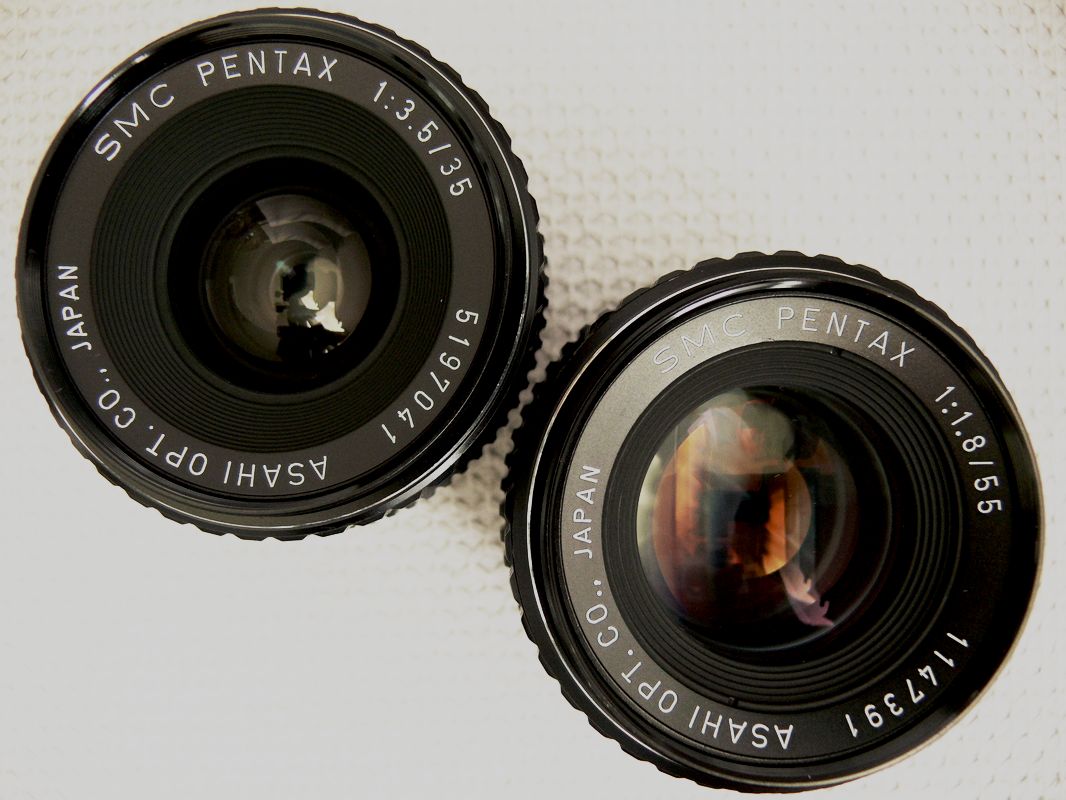
 RSS Feed
RSS Feed